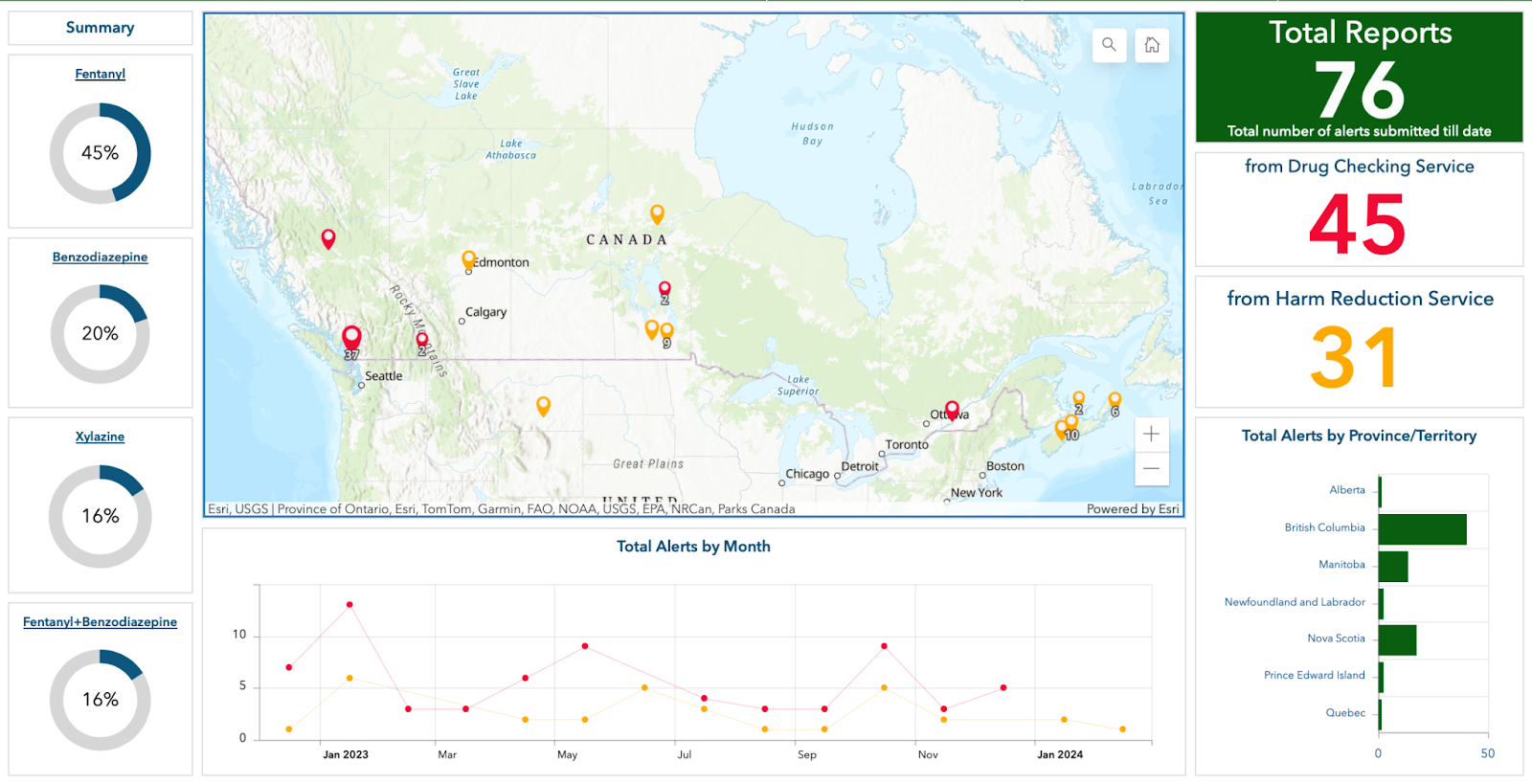Funding needed to keep toxic drug supply data dashboard going: St John Ambulance
Why It Matters
Crowdsourcing data points and information can help organizations in similar sectors access a single truth source. However, developing and sustaining databases requires financial sustainability.

The people behind a dashboard that tracks the supply of toxic drugs around the country are seeking further funding to become a self-sustaining project.
Launched in 2022, St John Ambulance developed the National Drug Alert System (NDAS) “in response to the continued escalation of the opioid crisis and the influx of toxic drugs in communities across Canada,” said Lisa Yang, the program manager for St John Ambulance’s Accidental Drug Poisoning Crisis Community of Practice (ADPC-CoP).
Currently, 11 partners across Canada who work in frontline harm reduction and drug checking “provide first-hand data on the substances they encounter and share their drug testing findings.”
These partner organizations, which are present in most provinces across the country, often encounter people who have taken substances. On occasion, people have taken substances with toxic chemical compositions, which have likely been mis-sold to them.
To keep track of these toxic substances, these partner organizations then fill out a form supplied by St John Ambulance, where they can record data about the physical appearance of the toxic substance and its chemical composition.

The dashboard – a map of the country and hotspot locations – “helps users, healthcare providers, and community members to make informed decisions and take appropriate precautionary measures,” Yang said.
“It can also help policymakers and researchers reinforce the need for safe supply.”
The NDAS was one of the 250 projects funded by Health Canada’s Substance Use and Addictions Program (SUAP), a $144 million pot which provides pilot funding to projects led by government, communities and non-profits that specifically address substance use prevention and harm reduction.
St John Ambulance received just over $872,000 to launch its Accidental Drug Poisoning Crisis Community of Practice and the NDAS. Now, the organization is seeking additional funding to cover the expenses of keeping the dashboard running: that includes a staff team to manage the data collection and cleaning processes and subscriptions to digital tools that host the dashboard, such as ArcGIS.
How is data on toxic drug supply collected and applied?
Between December 2022 and December 2023, the NDAS system gathered 1,600 unique users, 200 alert subscribers, and 267 new entries of reported toxic drug supplies nationwide.
More than 90 per cent of the users – primarily staff in the harm reduction and drug checking sectors – said the alerts they receive are timely and the system is easy to use, according to a webinar hosted by St John Ambulance.
St John Ambulance relies on its partners nationwide to crowdsource information on toxic drug supply. To increase the accuracy of information collected from different sources, they remove duplicate entries and embed a feedback loop to cross-check information between partner organizations.
Among the users are staff at the Nova Scotia Health Authority, who already collect community-level data on overdose reports, drug contamination and other drug-use-related harms and share this information with St John Ambulance for the national dashboard.
This information also trickles down to other organizations in the province, who receive funding from the public health arm to purchase and distribute drug checking strips to the community, says Sara White, a harm reduction consultant at Nova Scotia Health.
Users of the dashboard, who are also part of the Accidental Drug Poisoning Crisis Community of Practice, say it “has increased knowledge of the supply of drugs in their community or region of interest.” St John Ambulance can also aggregate and report quantitative information to Health Canada.
What will happen to the dashboard after funding expires?
More data could enhance the dashboard and, by extension, help the harm reduction community in its work, said Yang.
This could include trend data about substance use over time, demographic information, and outcomes of interventions.
Health Canada has already extended the pilot funding that the NDAS received through to March 2024, after which “the project is expected to be self-sustainable so [SUAP] funding can be reallocated to new programs for their start-up [cost],” Yang said.
After this time frame, the NDAS will migrate to St John Ambulance’s national website.
“Without additional funding to sustain the NDAS, it will unfortunately no longer be available after that month,” Yang said.

